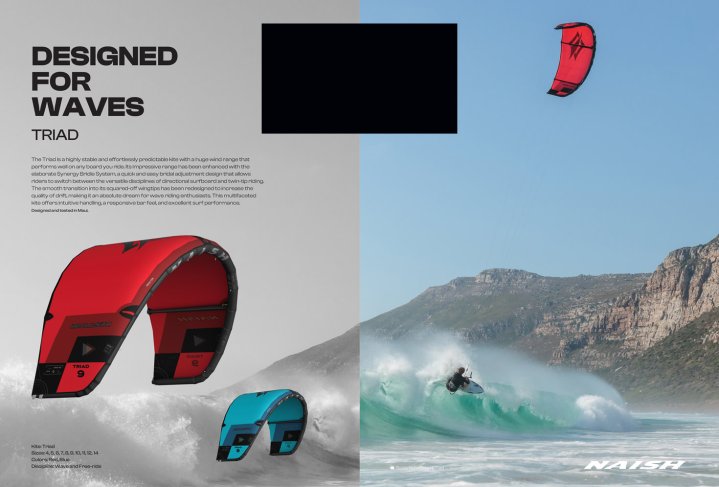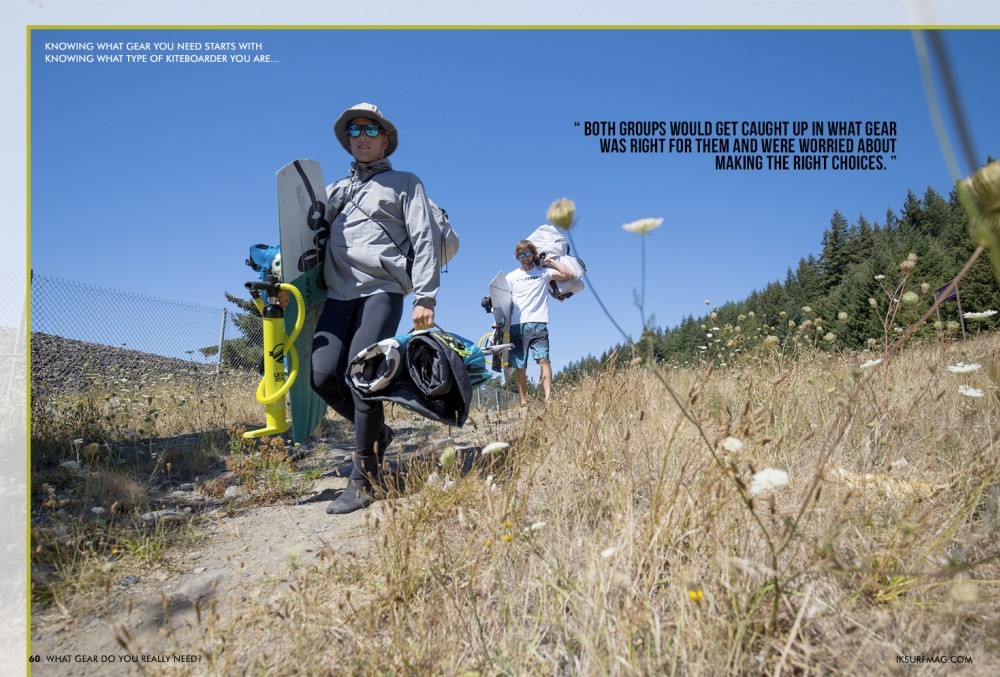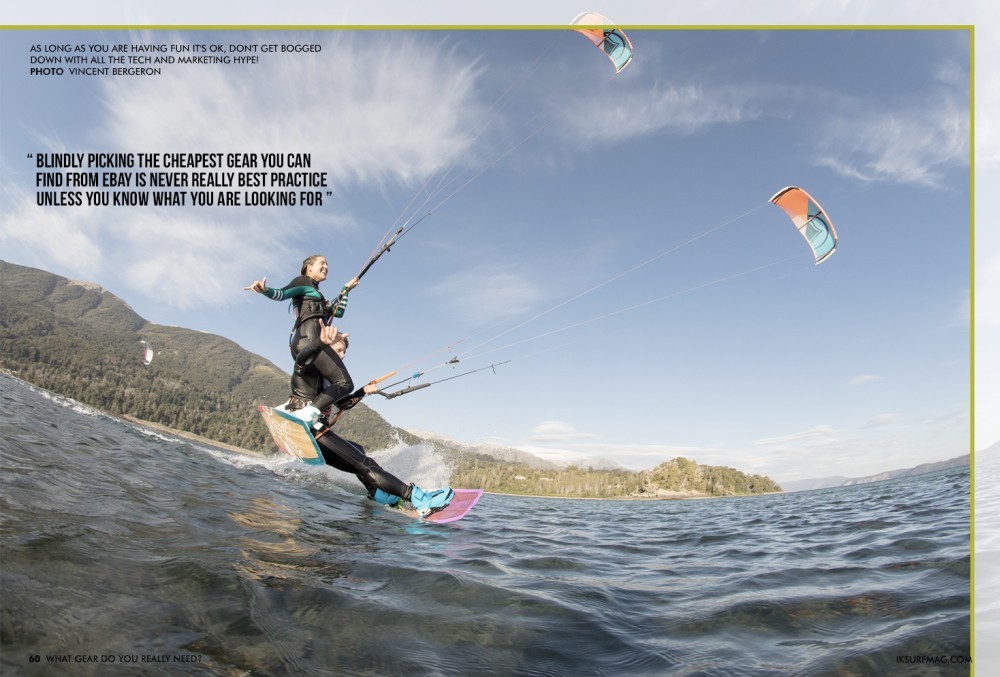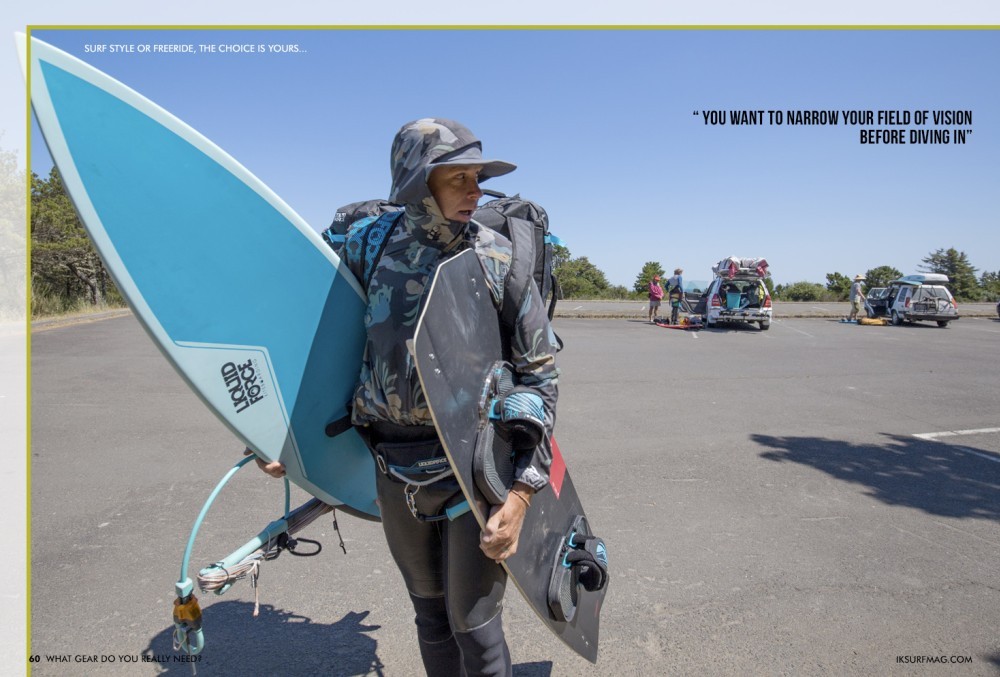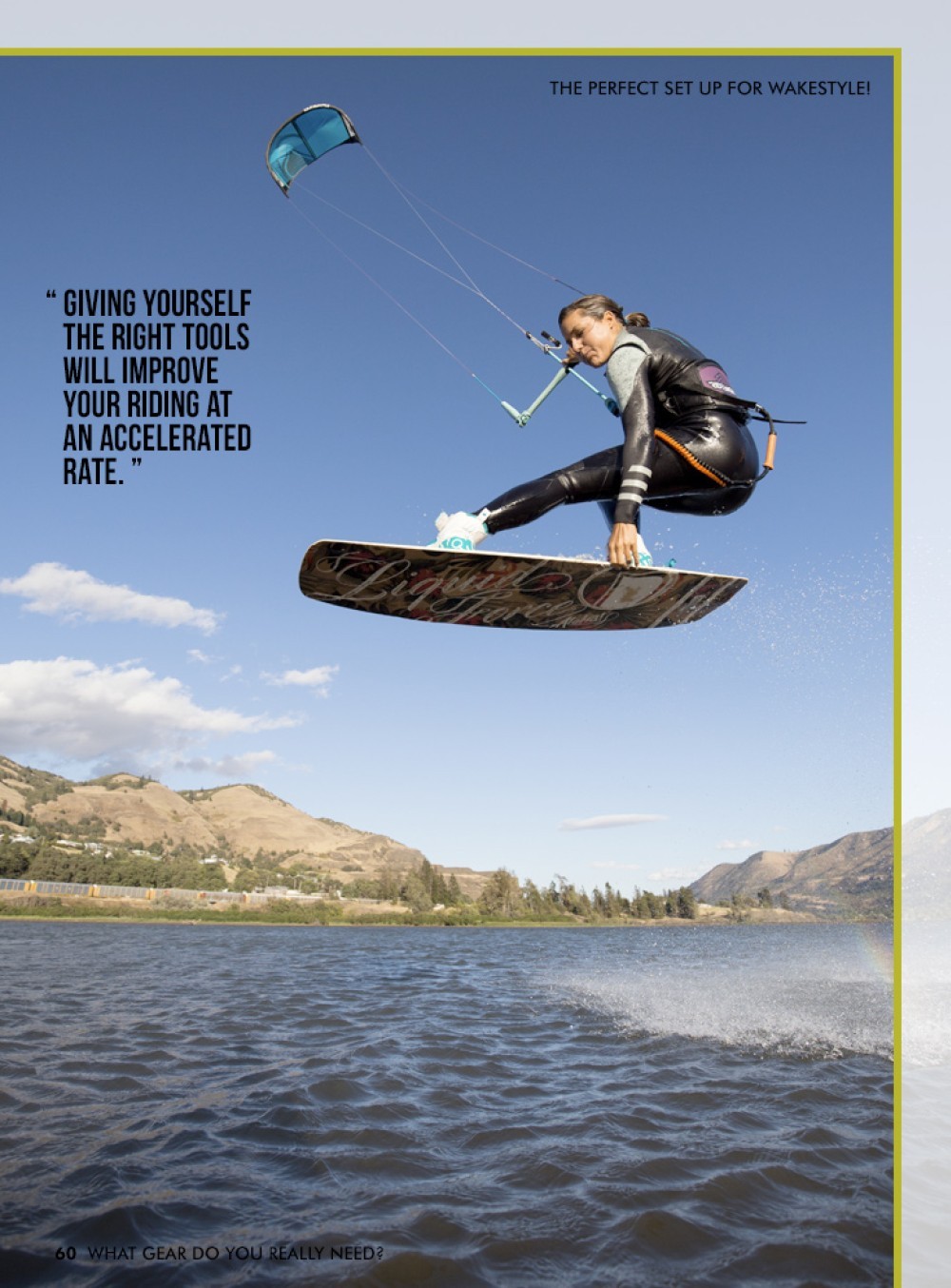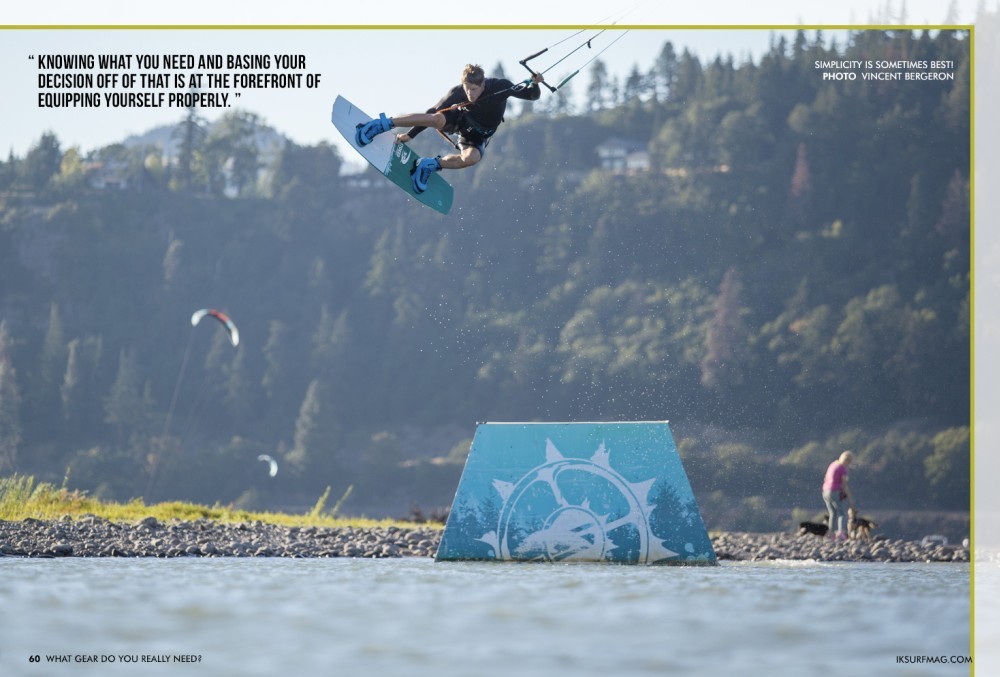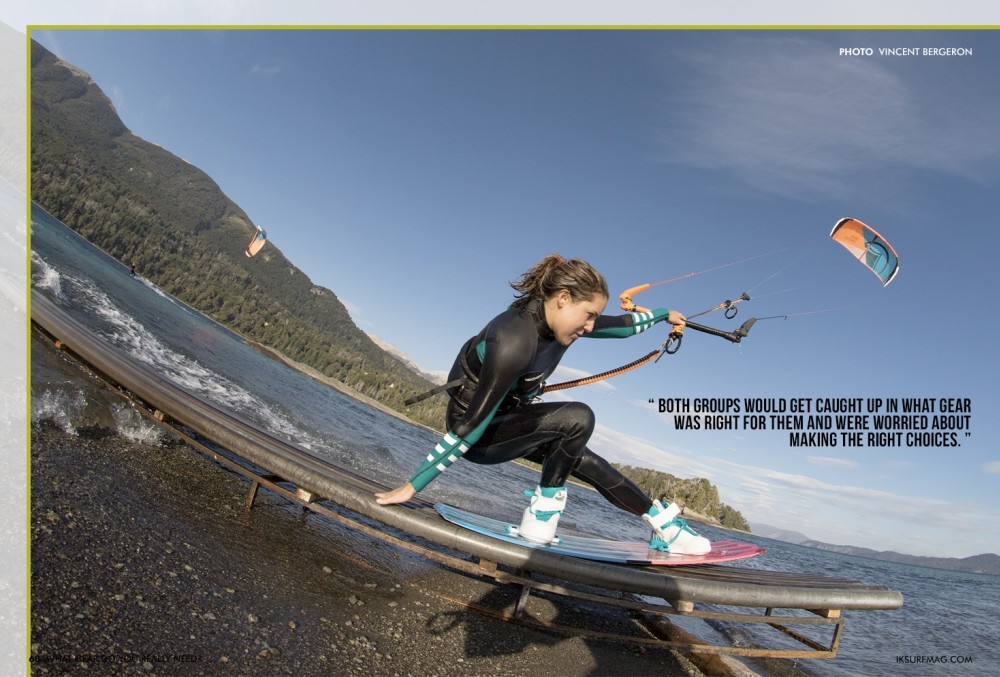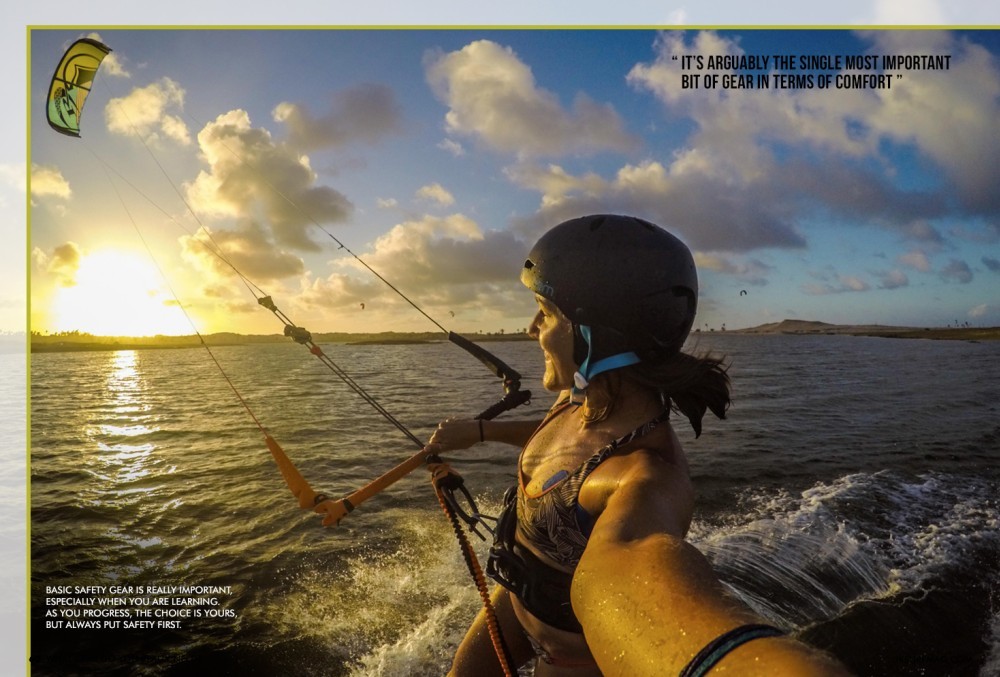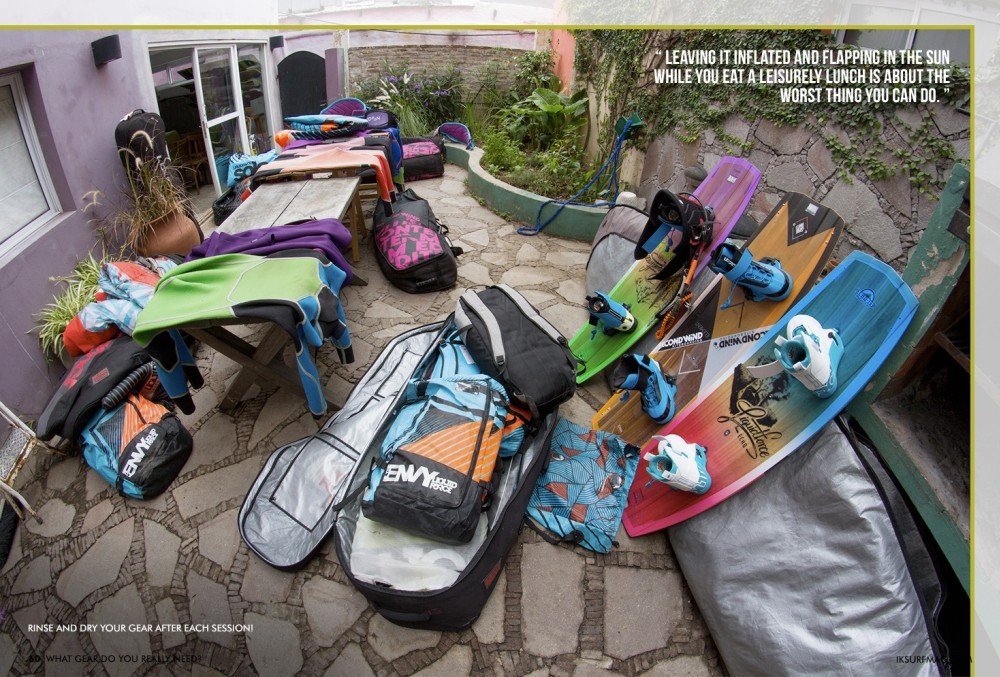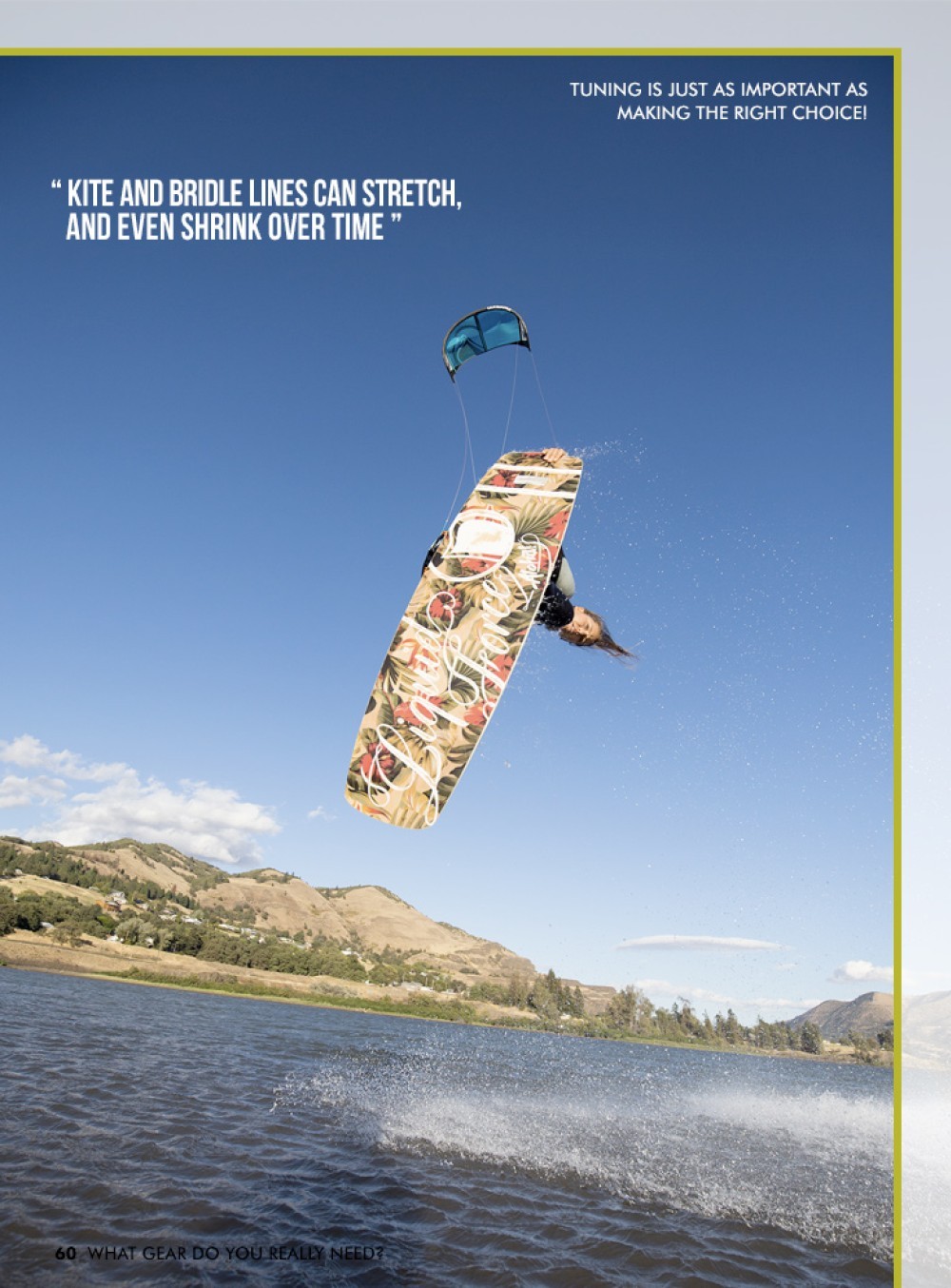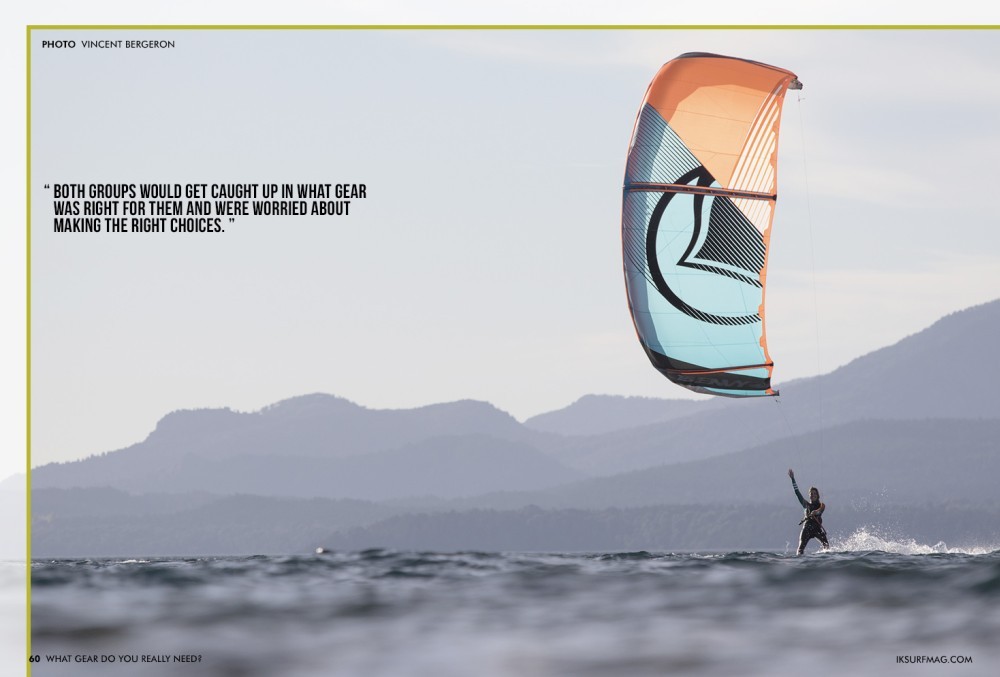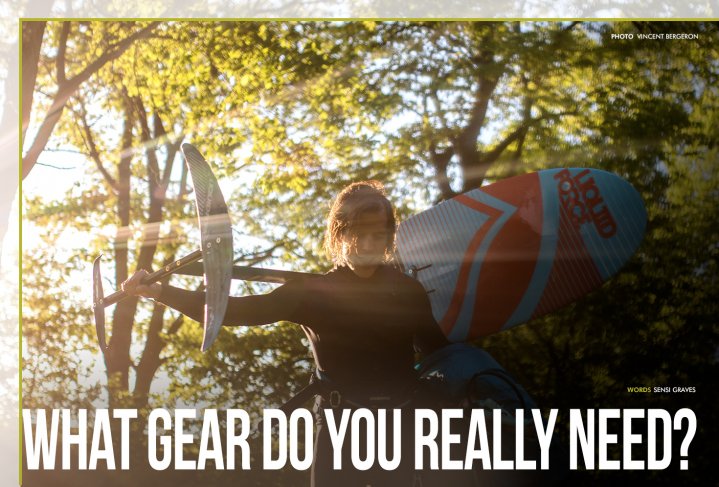
What Gear Do You Really Need?
Issue 60 / Tue 6th Dec, 2016
Sensi Graves takes an in-depth look at the equipment you need and the stuff you don’t, by analysing yourself and how you ride you can tune your quiver to perfect and get the most out of your gear, find out how by reading this!
Sensi Graves takes an in depth look at what equipment you really need to be a kiteboarder. Have you got all the gear and no idea? Do you agonise over what kite is right for you? Are you drowning in a mass of kite accessories and are you finding it takes you longer and longer to hit the water? This article is for you, and everyone else out there, after all, it’s always good to keep on learning!
The kite world is one of the techiest that I’ve found. While coaching in North Carolina, I used to interact with students that would have endless questions about how big their fins should be, how much rocker their board should have and the fine details between the 2010 bow kite they loved and the new ones that had just been released.
I taught a range of students; those that thought they knew exactly what they wanted and those that didn’t have any particular insight into how their kites actually worked. Both groups would get caught up in what gear was right for them and were worried about making the right choices. They were confused by all of the sales pitches out there and weren’t sure how to determine the gear they needed.
If you’re struggling with the same issues, the good news is that you can learn! You can become a kiteboarder that’s informed, knowledgeable and doesn’t get caught up in the hype. This guide serves to help you become that kiteboarder and enables you to worry less about what’s out there and focus more on what works for you.
The sheer number of kiteboarding accessories on the market is disturbing. From accelerometers (Woo, Trace, Xensr) to board leashes, more and more brands keep popping up and offering the next, greatest innovation. Not only is it impossible for the average rider to utilise all (or any) of these, furthermore, should we even be trying to? One of the most prevalent problems I see in kiting is that kiteboarders often have too much gear.
Seasoned kiteboarders have it figured out. A good quiver is an efficient one. Knowing your equipment and what it’s for is the number one starting point for assessing what gear you actually need. Stripping down and looking at your essentials will help you get a baseline for necessary additions. So the question remains, how do you find the right gear for you and what gear do you REALLY need? Let’s look at the basics…
Choosing The Right Gear
Kiteboarding is an individualised sport, and your gear can become as fine-tuned to your body and skill set as you want it to be. From the right harness for your waist to the right foot straps for your feet to the correct kite for your skill set, equipping yourself properly does indeed take know-how and research.
Choosing proper equipment stems from two components; analysing your skill set and fitting products to your body type. Blindly picking the cheapest gear you can find from eBay is never really best practice unless you know what you are looking for and have considered what we are about to layout below…
First, your skill set. The style of kiteboarding you engage in plays a huge role in determining your equipment needs. Wave seekers need different kites than wake style riders than big-air aficionados. One of the few good things about there being so many kitesurfing products and accessories on the market is that they allow you to fine tune your equipment.
Therefore, choosing the right gear starts with identifying the type of kiteboarder you are. So what type are you?
Start by asking yourself a few simple questions:
1. Where do you kite mostly? In the small waves at your local break? On the snow? In flat-water lakes? Is it at the same location or do you travel a lot?
2. How often do you kite? Are you a weekend warrior? Do you head out after work and need your equipment ready to go in your car? Do you vacation for a week or two of kiting at a time?
3. What’s your favourite thing to do while kiteboarding? Boost? Slash waves? Cruise back in forth enjoying the beautiful scenery?
4. Where would you like your kiting level to get to, what are your goals? Perhaps you’d like to learn to foilboard. Maybe you have an upcoming wave trip, or you have a friend that you’d like to beat on Woo.
Use your answers as a baseline for starting your equipment research. You want to narrow your field of vision before diving in, lest you get completely overwhelmed with the products out there.
Once you’ve identified your style of kiteboarding, you can quickly eliminate pieces that you won’t need. You can think of yourself as falling into one of these categories to start with; beginner, freeride intermediate, wakestyle aspirer, wakestyle pro, wave rider, minimalist, tech junkie, big air aficionado, or foil boarder. For instance, I love park riding. Therefore I know that I don’t need an accelerometer or a handle on my board, but a helmet is most certainly in my quiver.
The biggest takeaway here is that different kiteboarders require different gear. Once you’ve settled on your pathway, do your homework. Read reviews, watch videos and see if you can get your hands on the items in question. You can make anything work but giving yourself the RIGHT tools will improve your riding at an accelerated rate.
Keep the tips below in mind while searching for YOUR best kit.
Accommodate Your Goals
I recently switched from riding the Liquid Force Envy’s to riding the Hi-Fi X’s. I’ve been told for years that C kites are easier for doing freestyle tricks and despite loving my Envy’s; I finally succumbed to the hype (there’s a reason almost all pro riders favour C kites). While it took me a little while to get used to the new equipment, I soon felt the difference. These kites allow for better freestyle handling. Give yourself the best tools for where you’d like your riding to go.
At The Same Time
Be Realistic About Your Skill Set
What do you want to use your kites for? The Envy’s and most hybrid bow kites are insanely easy to re-launch and have superb wind range, which serves most riders out there. Just because you want to do raley-to-blinds, doesn’t necessarily mean a C kite is right for you. Think about all the applications for your kites and how you’ll be using them. Use that to make your final decision in regards to purchasing.
Finally, Be Wary Of The Hype
It’s easy to get caught up in getting the newest equipment. With the release of two brand new “game-changing” kite-to-rider systems, I won’t fault you for wanting the latest and greatest. But the fact remains, knowing what you need and basing your decision off of that is at the forefront of equipping yourself properly.
The second component in analysing what gear you really need in your quiver is based on taking the time to tune your quiver to your body. As you become more aware of how your equipment should help you perform, unnecessary pieces will begin to fall away.
That being said, beginner and intermediate kiteboarders have a tough time. Kiteboarding is expensive, and as a beginner, buying anything feels daunting. Discounted products are enticing and will help you get into the sport, but as you advance they can begin to hinder your riding.
Intermediate riders get bombarded with sales pitches and marketing, and it can be difficult to sift through all of the products on the market when you are ready to upgrade. It’s during this transition that finding tools adapted specifically to your body will give you immense benefits. Once you’ve established the type of kiting you’ll most likely be doing, choose products based on how they perform for you and your particular body size and shape.
When evaluating your dream set up, use these tips.
Get The Right Size
The correct size is critical, and it applies to everything, kites, boards, bars, wetsuits and harnesses. The number one thing you can do to upgrade your gear is to make sure it fits you and what you want to do with it. I used to ride boots that were too big for my feet. Initially, I tried a smaller size boot, but they felt cramped and crowded. Therefore I went up a size. However as I started to ride, the boots quickly stretched out, and there was way too much room inside of them.
I was swimming in them, and I couldn’t tighten them properly. Lesson learned. Boots and foot straps stretch the more you wear them. Be mindful of this when you’re picking a size. This same advice should be applied to boards, wetsuits and just about everything else out there. Make sure it fits!
Test Harnesses That Stay Put
A harness is like an office chair-different body types need different support and cuts. Try on a few harnesses to see which fits the best. Better yet, take it for a spin. If you can’t ride one, look for riders with a similar body type and ask them what their favourite harness is. You’re looking for something that doesn’t dig in anywhere, doesn’t ride up (at least very much) and has good support across the lower back.
Your harness takes all the power from the kite and converts it through your body to your board. It’s arguably the single most important bit of gear in terms of comfort as for your entire session it will be distributing the load from your kite. Get a harness that fits you and offers the best support, coupled with the right range of movement for your chosen riding style. A harness shouldn’t hurt or pinch at all, choose one that is the most comfortable, not the cheapest, most expensive or select one purely based on the brand.
When we test harnesses we have to give them to a range of testers as they are all so different and offer such a different feel, what fits one tester might feel terrible on another one. It’s just the same for you as a rider. A good kite shop should be able to help you get a great fit and even offer a few test rides to make sure you get the right one for you.
Take Advantage Of Brands’ Customisation Offerings
Most brands have settings to adjust the kites handling, the throw on the bar and where your feet are on the board. Analyse each component of your set up and take the time to test different settings. Ask the following questions constantly “can I make this more tuned for myself?” “Am I setting myself up for success?” you’ll be surprised by the results!
Once you’ve analysed the type of kiteboarder you are and taken the time to fit the products to your body, you’ll have developed a quiver that you can be proud of. Your efforts will result in a super-customized set-up that will help you meet your kiting goals.
Taking Care Of Your Gear
Now that you’ve built your perfect quiver, how exactly should you maintain it? Proper storage and care will prolong the life of your equipment, but more importantly, it will enable the best possible sessions out on the water. This may seem mundane, but I caution you against skimming over this section. I’ve spent countless sessions on the water where my bar was not tuned properly. Either I was too lazy to fix it, or I kept forgetting to do it. If your gear isn’t tuned correctly, your equipment won’t perform at it’s best, and your sessions are not as enjoyable as they could be.
Be Mindful Of Sun Damage
UV is the most detrimental when it comes to your kites lifespan. The sun’s rays break down the material faster than anything else. Don’t leave your kites out in the sun longer than necessary, it may seem like a chore to pack your kite away after each session at the beach, but leaving it inflated and flapping in the sun while you eat a leisurely lunch is about the worst thing you can do. With modern inflation systems and pumps making set up a breeze, make an effort to pack away after each session, and you’ll vastly improve the lifespan of your gear.
Proper Storage
When packing up your kit, take the time to rinse your board and your bar and brush the sand from your gear before you put it away. Skipping this step is easy, you’re bedraggled after a long day and want to take a shower and have a beer. But abrasions won’t make your gear last, and sand jamming any of the components will result in a loss of functionality.
Bar Maintenance
Take the time to properly tune your bar. Learn how to do it. Check it every ten sessions or so. Kite and bridle lines can stretch, and even shrink over time, as a rule, they will not do this uniformly. You might find your upwind ability in your kite seems to have diminished, chances are the front lines have ended up longer than the back, and the kite now flies choked and has less depower. Or the handling might be out of whack; one line may be longer than another, causing the kite to pull to the left or right. Getting to know how your bar should be tuned for perfect flying and handling and keeping it that way is imperative.
Regularly Check Your Equipment
Keep an eye out for tears, punctures and other minor nicks. Get in the habit of looking over your gear at the end of the day so that if anything needs repairing you can take care of it before you want to use it again.
A well-maintained quiver will serve you better than a super tricked-out quiver. You’ll get a lot more mileage out of your equipment and perhaps more importantly, the performance and safety will be the best they can be.
In conclusion, analysing what gear you really need in your kite quiver starts with examining yourself. If you can identify your specific requirements clearly, you won’t be caught up in the next must-have item in kiteboarding. To ensure that you’re a knowledgeable kiteboarder, you need to take matters into your hands.
Take an afternoon and look over your equipment. Assess what you have. Digest what it does for you. Determine your needs based on the type of kiteboarder you are and fit everything to yourself and then take care of it. Most importantly, realise that you don’t need everything.
A good quiver starts with the basics.
Pretty soon you’ll be giving your friends advice and jet-setting to Brazil with the peace of mind that comes from knowing you’ve got everything you need to make the trip a success.
What are you waiting for? Get out there and get customising!
By Sensi Graves



